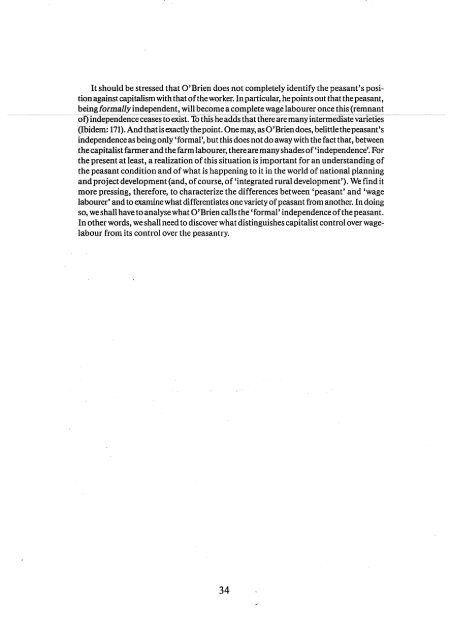You also want an ePaper? Increase the reach of your titles
YUMPU automatically turns print PDFs into web optimized ePapers that Google loves.
It should be stressed that O'Brien does not completely identify the peasant's position<br />
against capitalism with that of the worker. In particular, he points out that the peasant,<br />
being formally independent, will become a complete wage labourer once this (remnant<br />
ofjindependence ceases to exist. To this he adds that filere are manyintermei:Hate varieties<br />
(Ibidem: 171). And that is exactly the point. One may, as O'Brien does, belittle the peasant's<br />
independence as being only 'formal', but this does not do away with the fact that, between<br />
the capitalist farmer and the farm labourer, there are many shades of 'independence'. For<br />
the present at least, a realization of this situation is important for an understanding of<br />
the peasant condition and of what is happening to it in the world of national planning<br />
and project development (and, of course, of 'integrated rural development'). We find it<br />
more pressing, therefore, to characterize the differences between 'peasant' and 'wage<br />
labourer' and to examine what differentiates one variety of peasant from another. In doing<br />
so, we shall have to analyse what O'Brien calls the 'formal' independence of the peasant.<br />
In other words, we shall need to discover what distinguishes capitalist control over wagelabour<br />
from its control over the peasantry.<br />
34
















